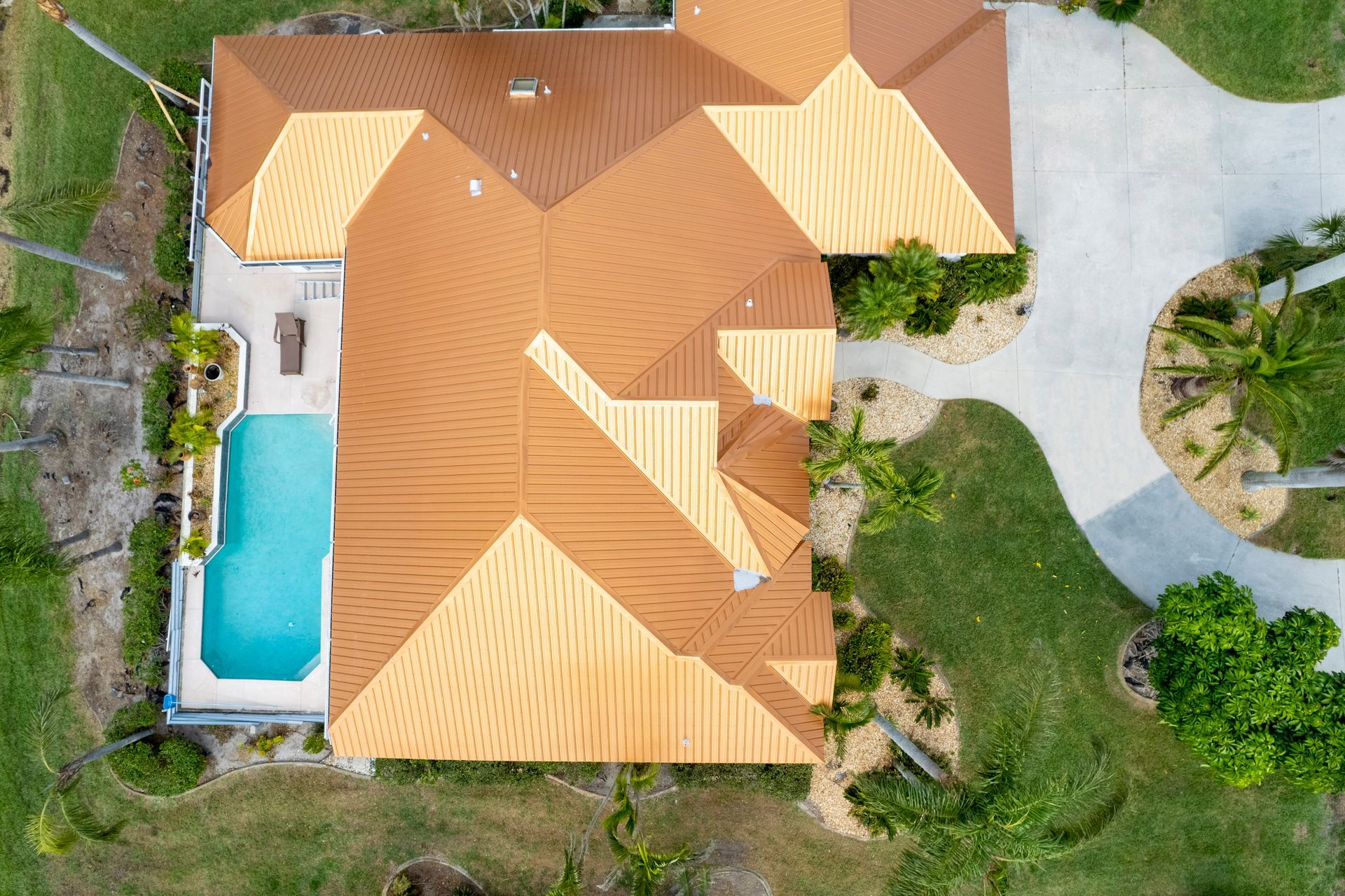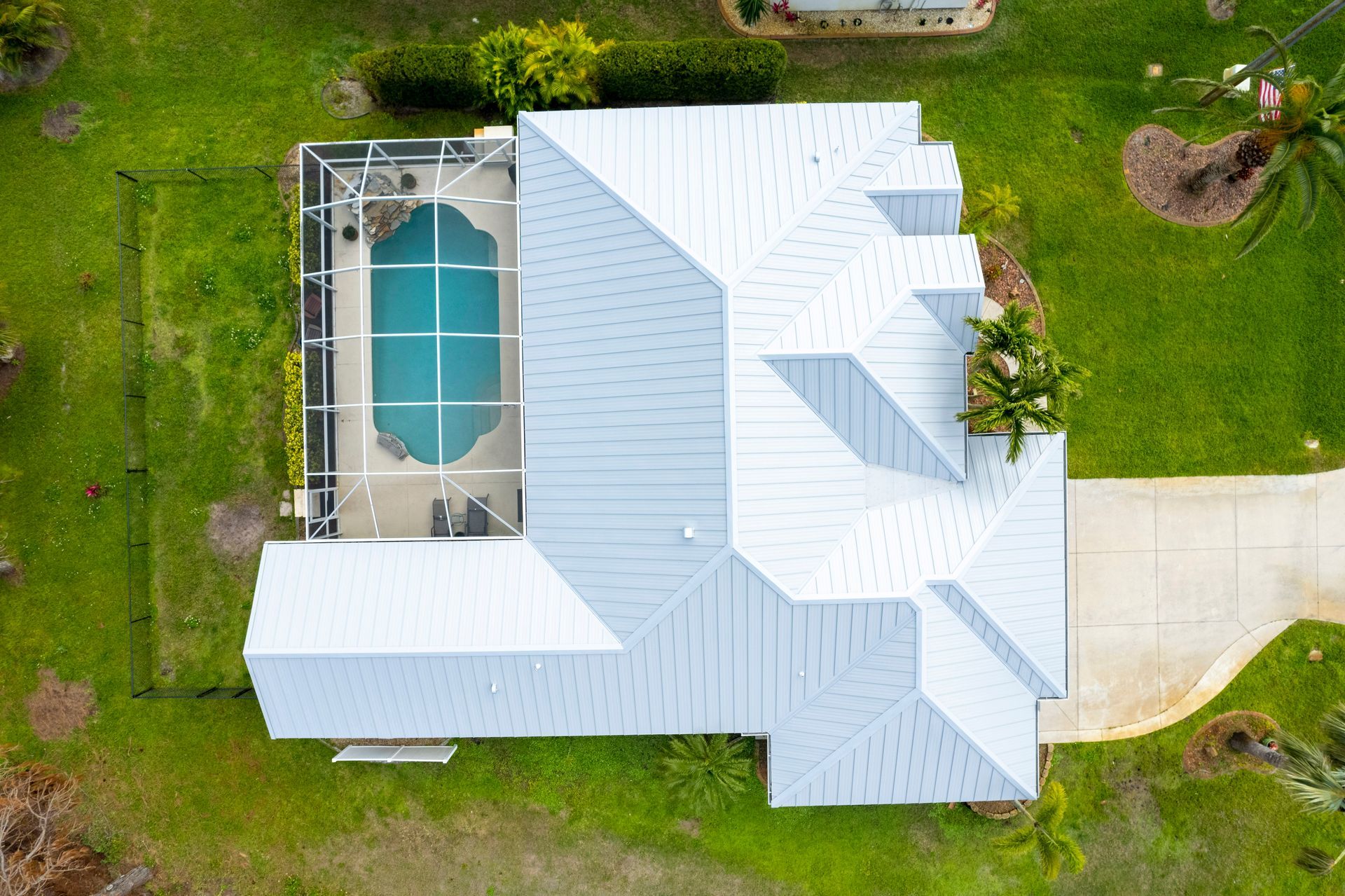Clay vs. Concrete vs. Composite Roof Tiles: Deciding the Best Option for Sarasota Homes
Overview of Roof Tile Options for Sarasota
When it comes to choosing a roof tile material for homes in Sarasota , homeowners often consider three main options: clay, concrete, and composite. Each of these materials has unique characteristics that make them suitable for the local climate and lifestyle. Sarasota’s weather is known for its intense heat, high humidity, frequent rainstorms, and occasional hurricanes , which means the ideal roofing material must be durable and weather-resistant. Homeowners also consider aesthetic appeal, as the right roof can enhance the architectural beauty of their property.
In addition to weather concerns, Sarasota residents often prefer roofing materials that align with the region’s popular architectural styles, such as Mediterranean or coastal designs. Clay tiles, for instance, are a timeless choice that complements traditional homes, while concrete offers a more budget-friendly yet sturdy alternative. Composite tiles, on the other hand, provide modern versatility and eco-friendly options. Understanding these choices sets the stage for making an informed decision about which roof tile is best suited for your Sarasota home.
Clay Roof Tiles: Features and Benefits
Clay roof tiles are renowned for their durability and ability to withstand extreme weather conditions, making them a top contender for Sarasota homes. These tiles are naturally resistant to fire, insects, and rot, which adds to their longevity. They also excel at reflecting heat, keeping homes cooler during Sarasota’s scorching summers. For homeowners who value classic aesthetics, clay tiles offer a timeless look that pairs beautifully with Mediterranean or Spanish-style architecture.
Beyond their practical benefits, clay tiles are incredibly long-lasting, often lasting 50 years or more with proper care. While they may require periodic cleaning to remove debris and prevent moss growth, their resistance to fading ensures they maintain their appearance over time. If you’re looking for a roofing material that combines elegance with resilience, clay tiles might be the perfect fit for your Sarasota home.
Concrete Roof Tiles: Advantages and Drawbacks
Concrete roof tiles are a cost-effective alternative to clay, offering many of the same benefits at a lower price point. These tiles are highly impact-resistant, making them ideal for areas prone to hail or flying debris during storms. Additionally, concrete tiles provide excellent insulation, helping to regulate indoor temperatures and reduce energy costs—a significant advantage in Sarasota’s hot climate. Their weight also contributes to wind resistance, which is crucial during hurricane season.
However, one drawback of concrete tiles is their substantial weight, which may require additional structural support for the roof. Homeowners considering this option should consult with a professional to ensure their home can handle the load. Despite this potential challenge, concrete tiles remain a popular choice for their balance of affordability, durability, and performance in challenging weather conditions.
Composite Roof Tiles: Modern Solutions and Appeal
Composite roof tiles are crafted from a blend of materials , such as recycled plastics, rubber, or fiber-cement, offering a lightweight and versatile solution for modern homes. These tiles mimic the appearance of natural materials like wood, slate, or clay, allowing homeowners to achieve the desired aesthetic without the associated drawbacks. Composite tiles are particularly appealing in Sarasota due to their resistance to moisture, UV rays, and salt air, all of which are common environmental factors in the area.
Another advantage of composite tiles is their adaptability to various architectural styles, from sleek contemporary designs to rustic ranch homes. They are also easier to install than heavier materials like clay or concrete, reducing labor costs and installation time. For environmentally conscious homeowners, composite tiles often include recycled content, making them a sustainable choice. With their combination of style, functionality, and eco-friendliness, composite tiles are a compelling option for Sarasota roofs.
Weather Resistance and Performance in Sarasota’s Climate
Sarasota’s unique climate presents specific challenges for roofing materials, including intense sunlight, high humidity, heavy rainfall, and salty coastal air. Clay tiles excel in heat reflection and are highly resistant to corrosion from salt spray, making them a reliable choice for coastal homes. Concrete tiles, with their weight and density, provide excellent wind resistance, which is critical during hurricane season. Both materials are non-porous, ensuring minimal water absorption and reducing the risk of leaks.
Composite tiles, designed with modern technology, offer superior resistance to UV damage and moisture, preventing warping or cracking over time. They are also engineered to meet strict wind-rating standards, making them a safe option for storm-prone areas. Ultimately, the best material depends on how well it performs against Sarasota’s diverse weather patterns, as well as the homeowner’s priorities regarding durability and maintenance.
Longevity and Maintenance Considerations
The lifespan of roof tiles varies significantly depending on the material. Clay tiles are known for their exceptional longevity, often lasting 50 to 100 years with minimal upkeep. Concrete tiles typically endure 30 to 50 years, while composite tiles generally last 30 to 40 years. Regular maintenance, such as cleaning and inspections , is essential for maximizing the lifespan of any roof. Clay and concrete tiles may require occasional repairs due to cracks or chips , while composite tiles are less prone to physical damage.
Maintenance requirements also influence long-term costs. For example, clay tiles may need periodic sealing to maintain their water resistance, while composite tiles rarely require additional treatments. By investing in routine care and addressing issues promptly, homeowners can extend the life of their roof and avoid costly replacements. Choosing a material that aligns with your maintenance preferences and budget is key to ensuring satisfaction over time.
Style and Architectural Compatibility
Matching roof tiles to the architectural style of your home is crucial for maintaining curb appeal and adhering to neighborhood norms. Clay tiles are a natural fit for Mediterranean, Spanish, or Tuscan designs, while concrete tiles offer a similar aesthetic at a lower cost. Composite tiles shine in versatility, complementing modern, ranch, or even historic styles with customizable textures and colors. Homeowners’ associations (HOAs) often have specific guidelines, so it’s important to select a material that meets both personal taste and community standards.
Cost Comparison and Financial Factors
Cost is a significant factor when choosing roof tiles , and prices vary widely among clay, concrete, and composite options. Clay tiles are the most expensive upfront, with installation costs ranging from $15 to $30 per square foot due to their weight and labor-intensive installation process. Concrete tiles are more affordable, typically costing between $8 and $15 per square foot, while composite tiles fall in the middle, averaging $10 to $20 per square foot. Additional expenses, such as roof reinforcement for heavier materials, can further impact the overall budget.
While initial costs are important, long-term savings should also be considered. Clay and concrete tiles offer exceptional durability, reducing the need for frequent replacements. Composite tiles, though slightly less durable, contribute to energy efficiency and lower maintenance costs. By weighing upfront expenses against long-term benefits, homeowners can make a financially sound decision that aligns with their priorities.
Environmental Impact and Sustainability of Roof Tile Materials
For eco-conscious homeowners, the environmental impact of roofing materials is a key consideration. Clay tiles are made from natural materials and are fully recyclable, making them an environmentally friendly choice. Concrete tiles, while not as sustainable, can include recycled content and are highly durable, reducing waste over time. Composite tiles stand out for their use of recycled plastics and rubber, minimizing landfill contributions. Each material offers unique advantages for those seeking to reduce their carbon footprint while maintaining a stylish and functional roof.
HOA and Local Sarasota Regulations
Homeowners in Sarasota must navigate HOA rules and local regulations when selecting roof tiles. Many neighborhoods have strict guidelines regarding color, texture, and material to ensure uniformity and preserve property values. Some areas may prohibit certain materials or require permits for installation, especially if structural modifications are needed. Consulting with local authorities and reviewing HOA covenants can help homeowners avoid costly mistakes and ensure compliance with community standards.
Installation Process and Timeline
The installation process for roof tiles varies based on the material chosen. Clay and concrete tiles require careful handling due to their weight, often extending the installation timeline to several weeks. Composite tiles, being lighter and easier to work with, can typically be installed more quickly. Homeowners should prepare for disruptions during installation and ensure their contractor conducts a thorough inspection of the roof structure beforehand. Proper planning and communication with the installation team can streamline the process and minimize delays.
Hybrid Roofing Solutions: Mixing Materials for Optimal Performance
A growing trend in Sarasota is the use of hybrid roofing solutions, where different materials are combined to optimize performance, cost, and aesthetics. For example, clay or concrete tiles might be used on the main structure for durability and visual appeal, while composite or metal tiles are applied to additions or garages for affordability and flexibility. This approach allows homeowners to enjoy the benefits of multiple materials while meeting budgetary and design goals. Hybrid solutions represent a creative way to address the unique needs of Sarasota homes.
Frequently Asked Questions
Are clay roof tiles too heavy for my Sarasota home?
Clay roof tiles are indeed heavier than other options, often weighing between 900 to 1,200 pounds per square. Before choosing clay tiles, it’s essential to have a structural assessment performed by a professional to ensure your roof can support the added weight. Reinforcements may be necessary, but the investment can be worthwhile for the classic beauty and durability clay provides.
Which roof tile lasts the longest in the Sarasota climate?
Clay tiles are the longest-lasting option, with lifespans of 50 to 100 years. Concrete tiles follow closely, enduring 30 to 50 years, while composite tiles typically last 30 to 40 years. All three materials perform well in Sarasota’s climate, but clay’s resistance to heat, moisture, and salt air makes it a standout choice for longevity.
Is there a major price difference between clay, concrete, and composite tiles?
Yes, there is a noticeable price difference among these materials. Clay tiles are the most expensive, followed by composite tiles, while concrete tiles are the most budget-friendly. Installation costs and long-term maintenance should also be factored into the overall expense to determine the best value for your investment.
Which roofing material offers the best resistance to hurricane winds?
Concrete tiles are often praised for their wind resistance, capable of withstanding winds up to 150 mph. Clay tiles also perform well in high winds, provided they are properly installed. Composite tiles are engineered to meet strict wind-rating standards, making them a reliable choice for Sarasota’s hurricane-prone environment.
Will my HOA allow me to pick any roof tile I want?
HOAs in Sarasota frequently impose restrictions on roof tile materials, colors, and styles to maintain neighborhood aesthetics. It’s crucial to review your HOA’s guidelines and obtain approval before proceeding with your choice. Ignoring these rules can result in fines or required modifications, so always verify compliance beforehand.
Conclusion
Choosing the best roof tile for a Sarasota home involves balancing durability, aesthetics, cost, and regulatory compliance. Clay tiles offer unmatched longevity and classic charm, making them ideal for traditional homes. Concrete tiles provide a budget-friendly yet robust solution, excelling in impact resistance and insulation. Composite tiles bring modern versatility, lightweight convenience, and eco-friendly benefits to the table. Each material has its strengths and weaknesses, and the right choice depends on your unique priorities and circumstances.
To make the best decision, assess your home’s structural capacity, architectural style, and budgetary constraints. Consulting with a roofing professional can provide personalized guidance tailored to your needs. Whether you prioritize weather protection, curb appeal, or sustainability, understanding the differences between clay, concrete, and composite tiles will empower you to create a roof that enhances your Sarasota home for years to come. Call to Action: Reach out to a trusted roofing expert today to explore your options and find the perfect solution for your home.
Have any questionS?
Reach out to our roofing specialists for more answers on the various options for your home.



